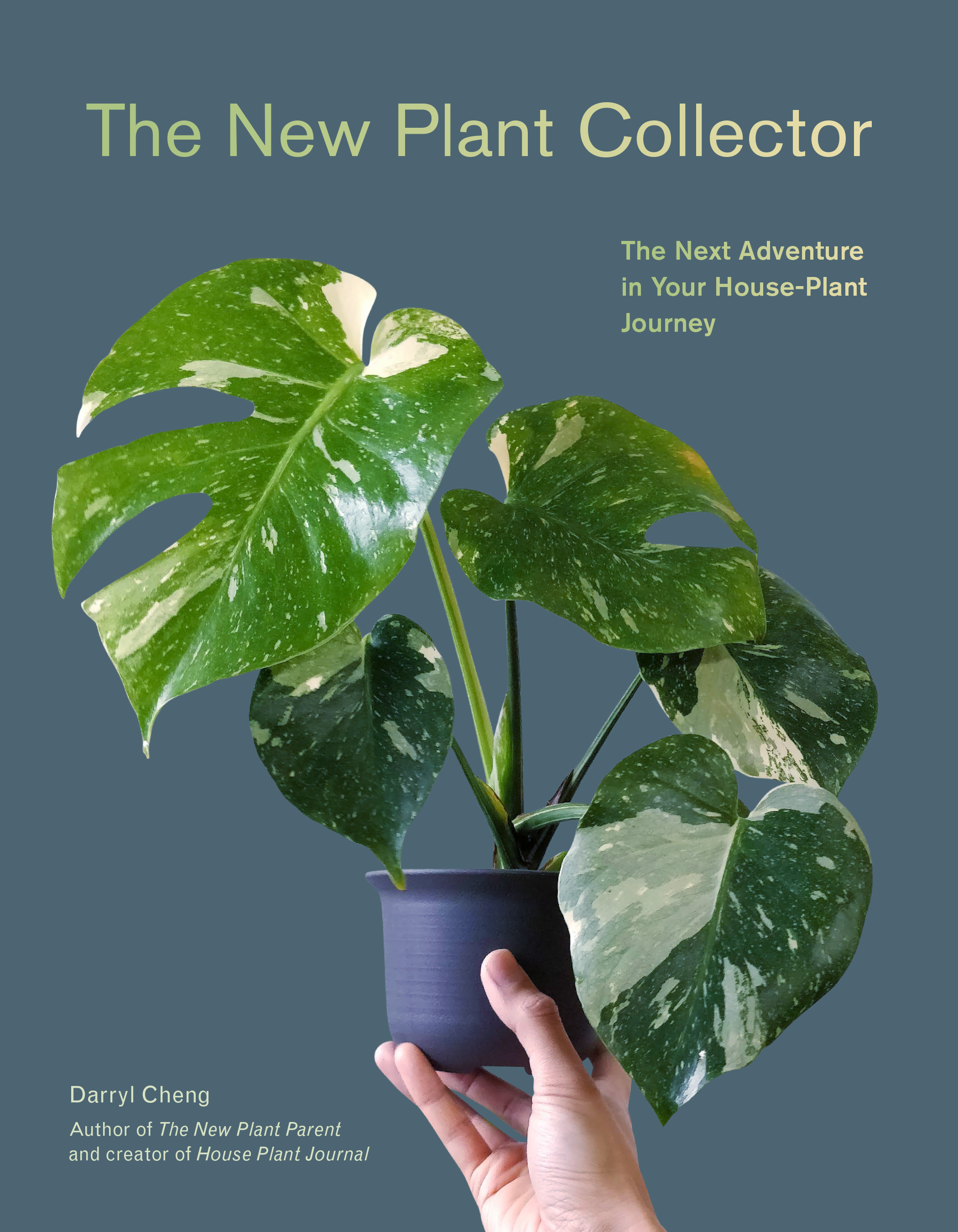Disclaimer: this is a paid partnership between Soltech Solutions and House Plant Journal. The products were given to House Plant Journal to provide an honest review. Using the links to purchase from Soltech supports my efforts to create educational content on House Plant Journal.
Get 15% off a Soltech grow light with my code: DARRYLASP2
(House Plant Journal is an affiliate partner with Soltech)
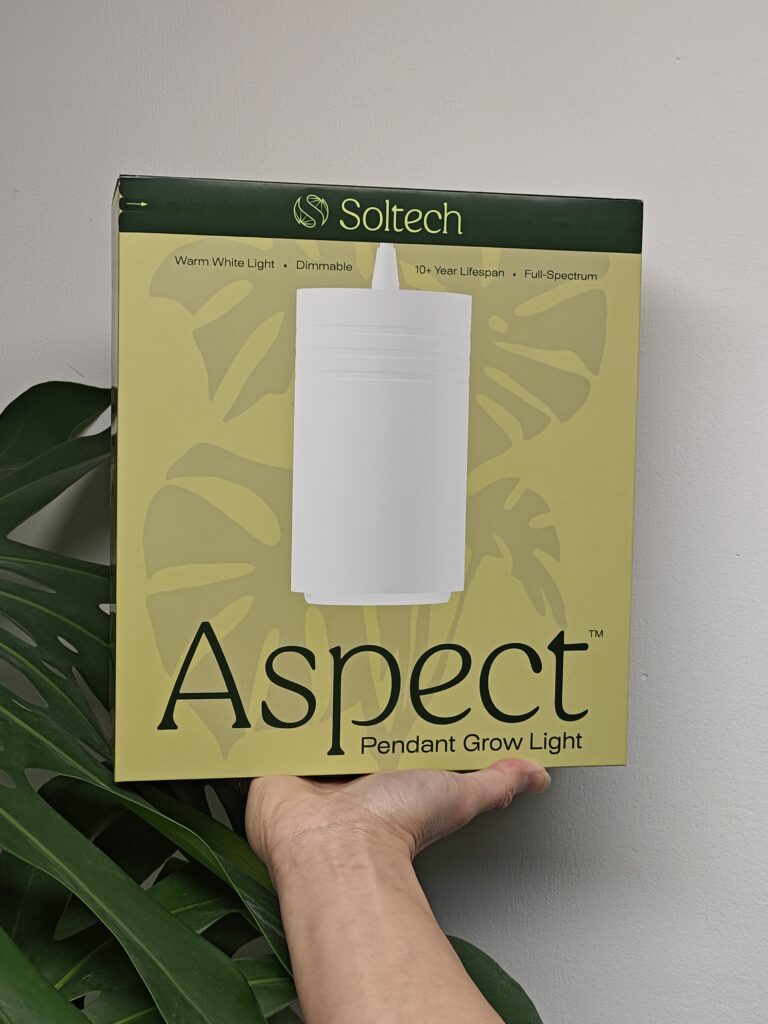
Unboxing & Build Quality
Soltech has outdone themselves again right from the unboxing experience. The packaging is such a pleasure to open, revealing the grow light unit and the included accessories.
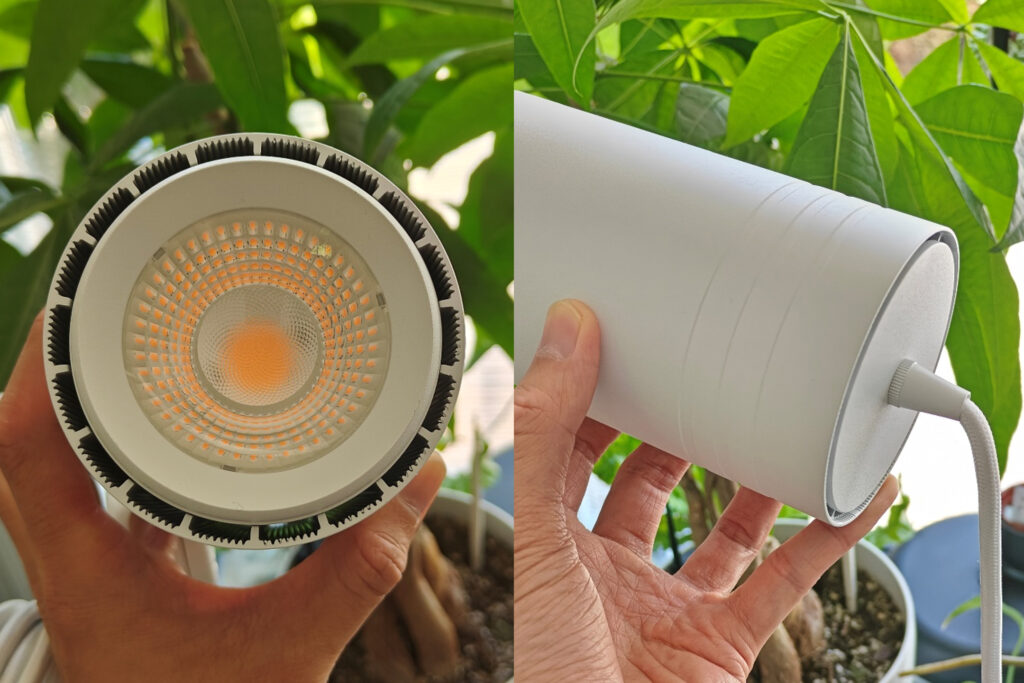
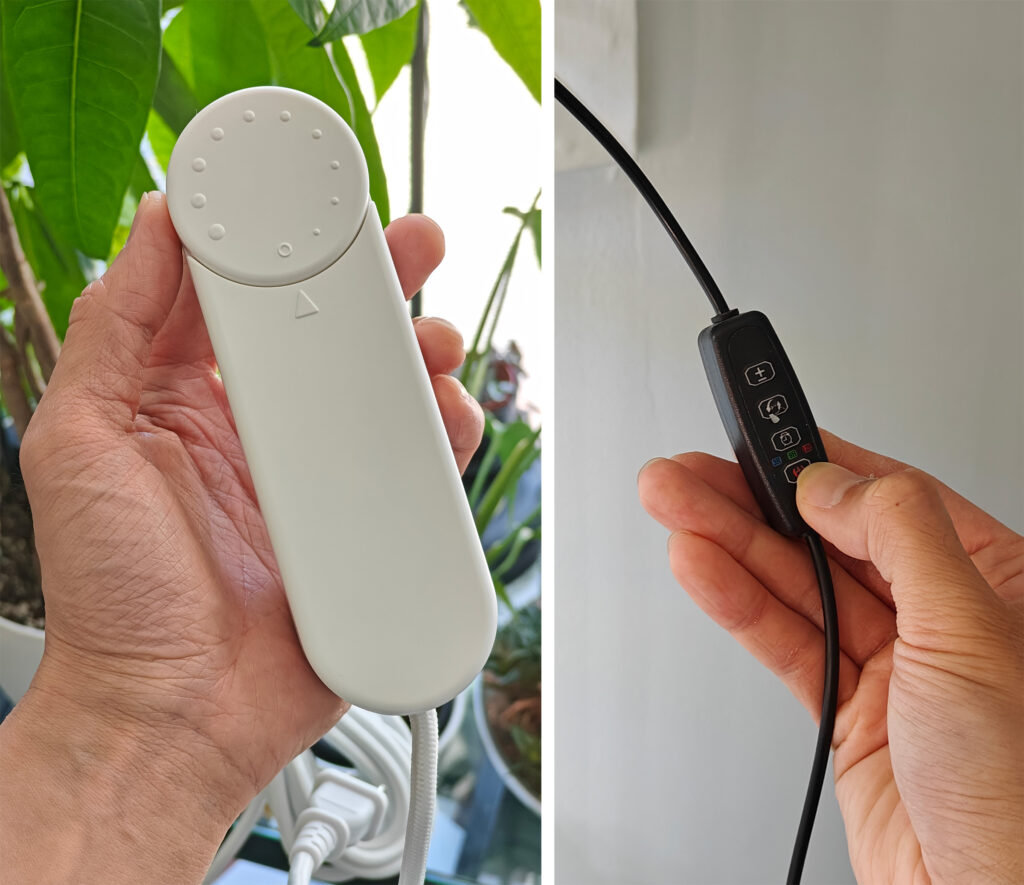
A noticeable new feature is the easy-to-handle dimmer switch. The majority of dimmer switches I’ve seen on grow light are tiny buttons only accessible by the very tips of your fingers. The Soltech Apsect Gen2 has a large dial with clear brightness indicators.
Included Accessories
One thing I’ve always appreciated about Soltech products is their attention to detail in terms of how the grow light can be installed. The Apsect Gen2 comes with a sleek ceiling hook and three fairleads (wire guides) that match the design of the light fixture. With these accessories, you will be able to mount the grow light anywhere in a room while neatly securing the cord.
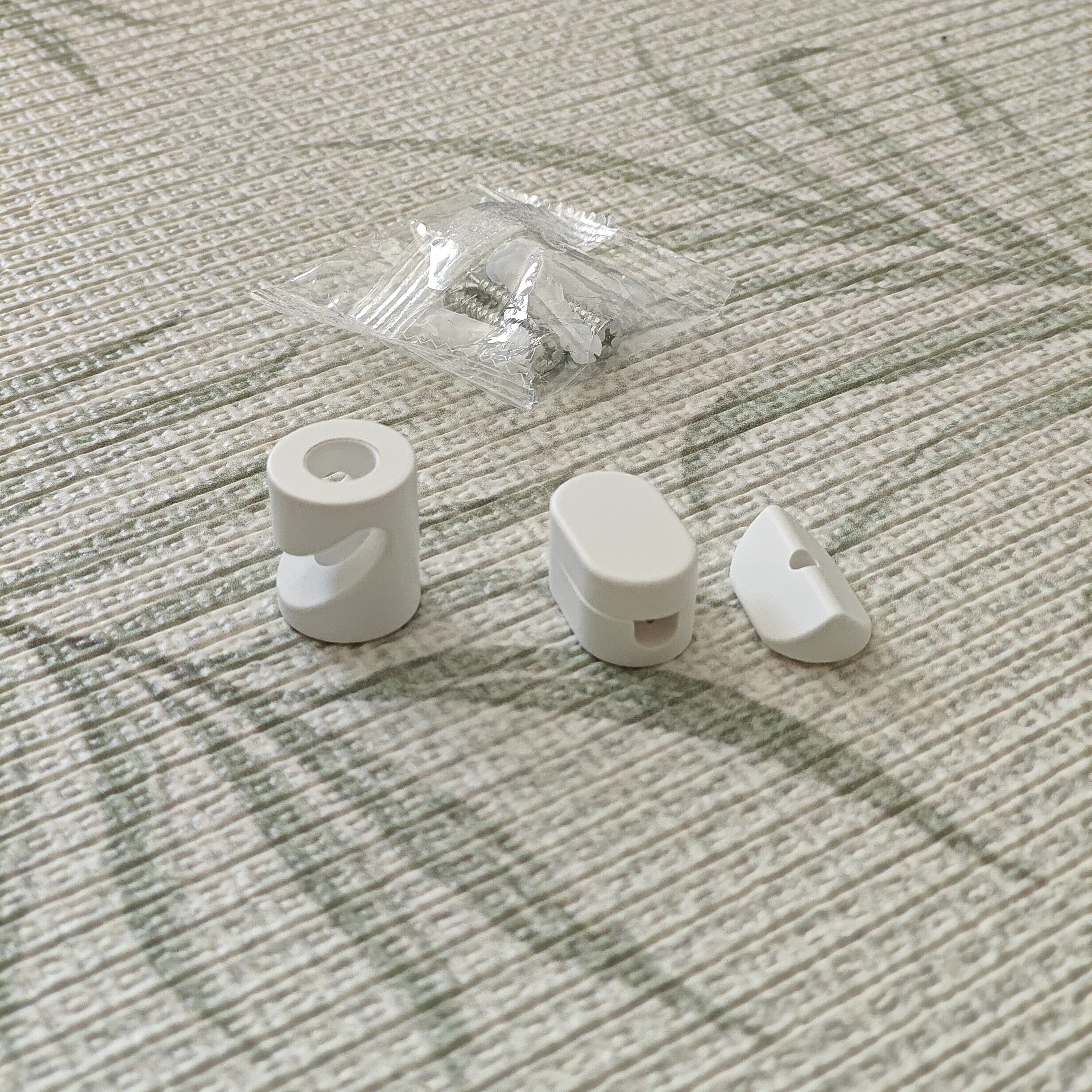
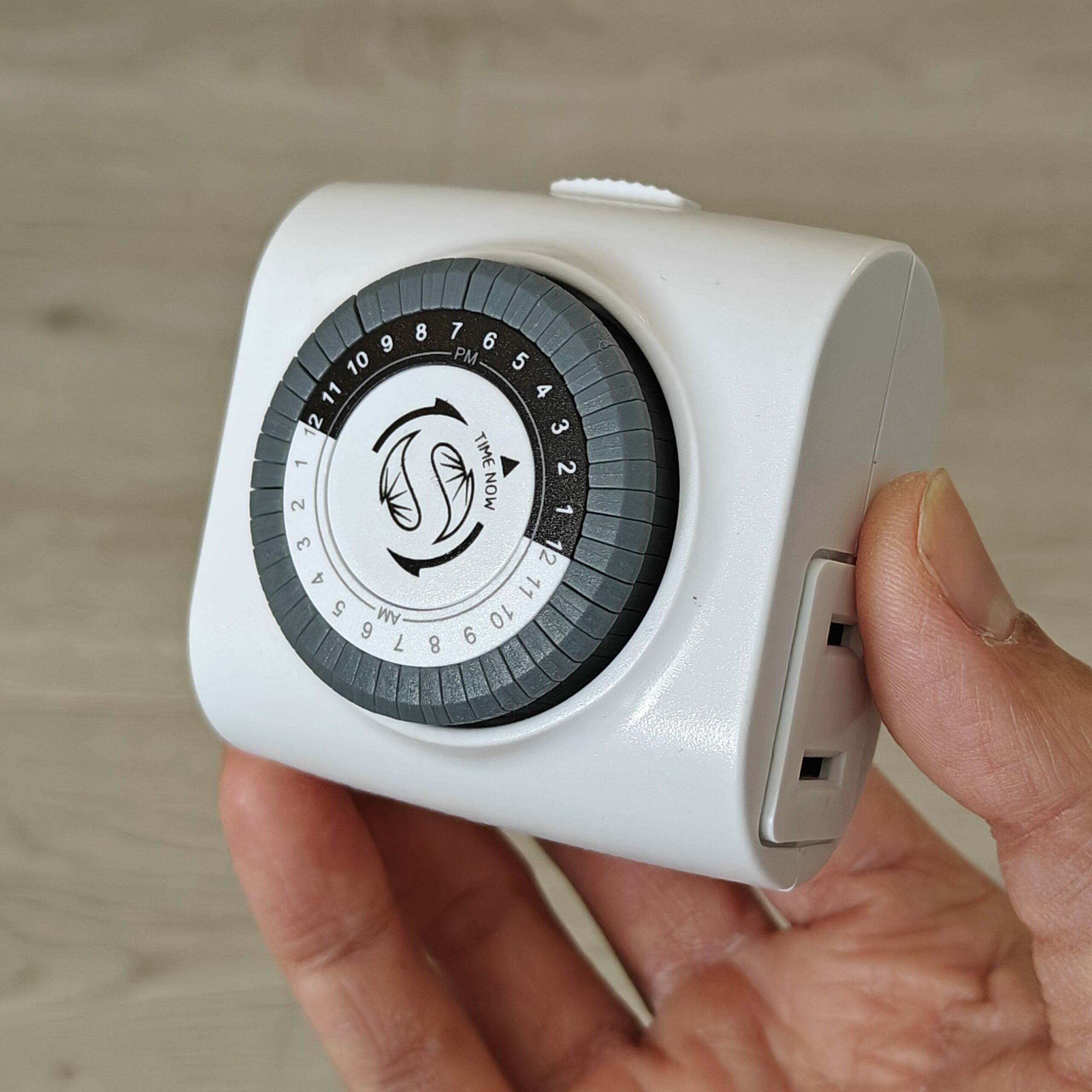
The Specs
Soltech lights have always used the latest in LED technology so I would expect a second generation Aspect light to perform very well. Using my spectrometer, I can verify claims about color rendering index (CRI), spectral power distribution (SPD), and color temperature. The light strength, in Photosynthetic Photon Flux Density (PPFD) and illuminance (foot-candles) can be measured by my LTH Meter and the spectrometer. Photosynthetic Photon Flux (PPF) and total light output (lumen) have to be measured by equipment that I don’t have at home so I’ll take their word for these!
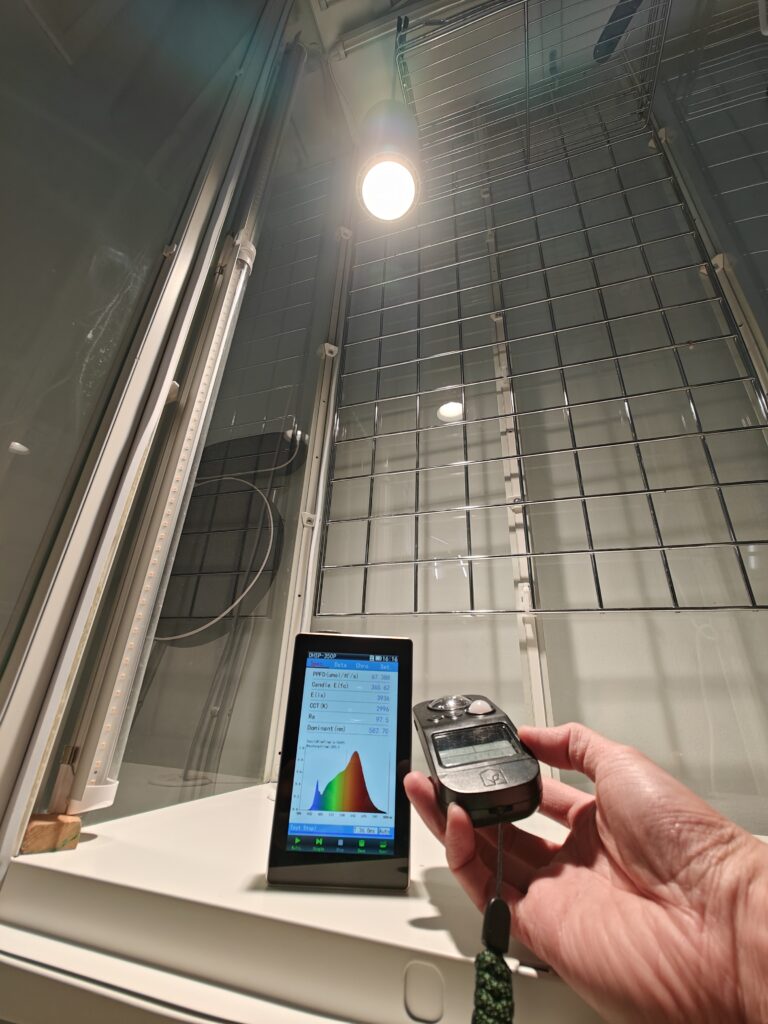
CRI – although CRI is not directly relevant to plant growth, it’s relevant to how humans see colors. If you’ve ever noticed weird colors when using a cheap LED or fluorescent light, you’re probably experiencing a light with low CRI. The Apsect Gen2 has a CRI of 97.5*, which is the kind of rating professional photography studios would want! Needless to say, your plants and surrounding furniture will look amazing!
(*Soltech’s website states a CRI of 98, which is probably a lab certified result – my test wasn’t done in a lab but it is still pretty close!)
Color Temperature – the Apsect Gen2 (as with all Soltech lights) is a “warm white”, which is 3000K. This is the typical color temperature for “comfortable” interior lighting. For reference, a dim candle produces an orange tinted light at around 2700K while sterile office lighting (more blue tinted) could be 4000K to 5000K. For the majority of tropical foliage plants (“houseplants”), color temperature has little impact on growth so it’s really more of a consideration for visual comfort.
Light Strength (PPFD, FC) – while PPF represents the total photosynthetic output of the bulb, the amount of light that actually reaches the plant is PPFD, which must be measured at different distances. And, in the case of white LED light, we can use FC measurements as well since the spectral difference between natural light and white LED is not terrible.
I measured the Aspect Gen2 at full power at 12, 24, and 48 inches away – and at half power at the same distances. Note, I say “half power” because I turned the dial to halfway between full power and off – it may not have been exactly half the power.
PPFD/FC at Full Power:
- 683 umol/3734 FC at 12” away
- 167 umol/915 FC at 24” away
- 46 umol/253 FC at 48” away
PPFD/FC at Half Power
- 316 umol/1719 FC at 12” away
- 86 umol/471 FC at 24” away
- 22 umol/123 FC at 48” away
Usage Example: Monstera Burle-Marx Flame
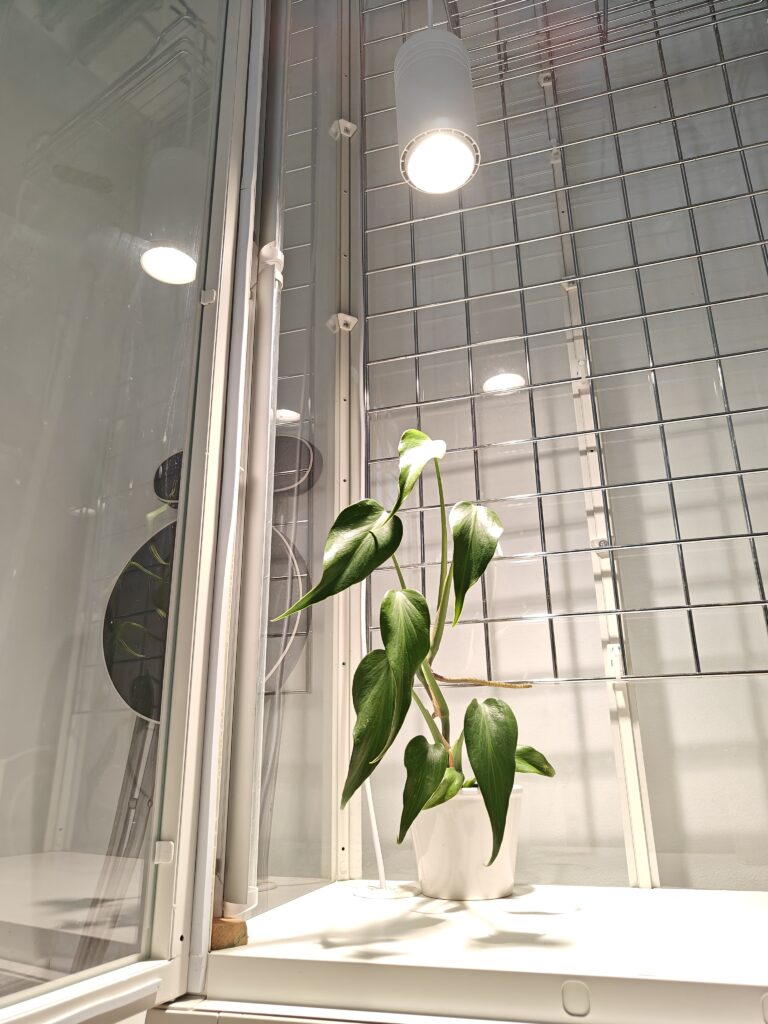
Although many so-called rare plants have come down in price, the Monstera Burle-Marx Flame is still quite sought-after! Thankfully, many shops carry young specimens to get you started but if you’re looking to level up to fenestrations, light is the key! And measuring light is the only way to be certain exactly how much light your plant is receiving.
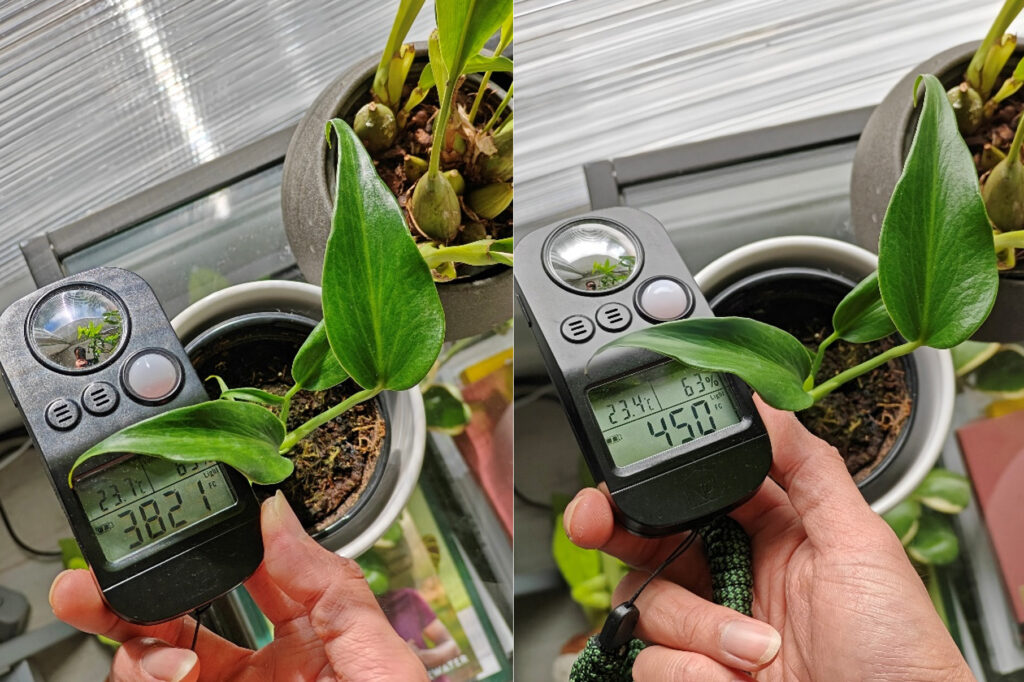
Assessing my plant’s light situation in front of my large south-east facing window, it gets roughly 2 hours of direct sun (measuring 3000-4000 FC) while the rest of the day, the indirect light is in the 200-400 FC range. For more on assessing indoor natural light, read this article.
This is a pretty good light situation for most plants but since I’m eager to get fenestrations on this Burle-Marx Flame ASAP, I will use the Aspect Gen2 grow light to deliver more light to the plant than what it could receive in front of my window.
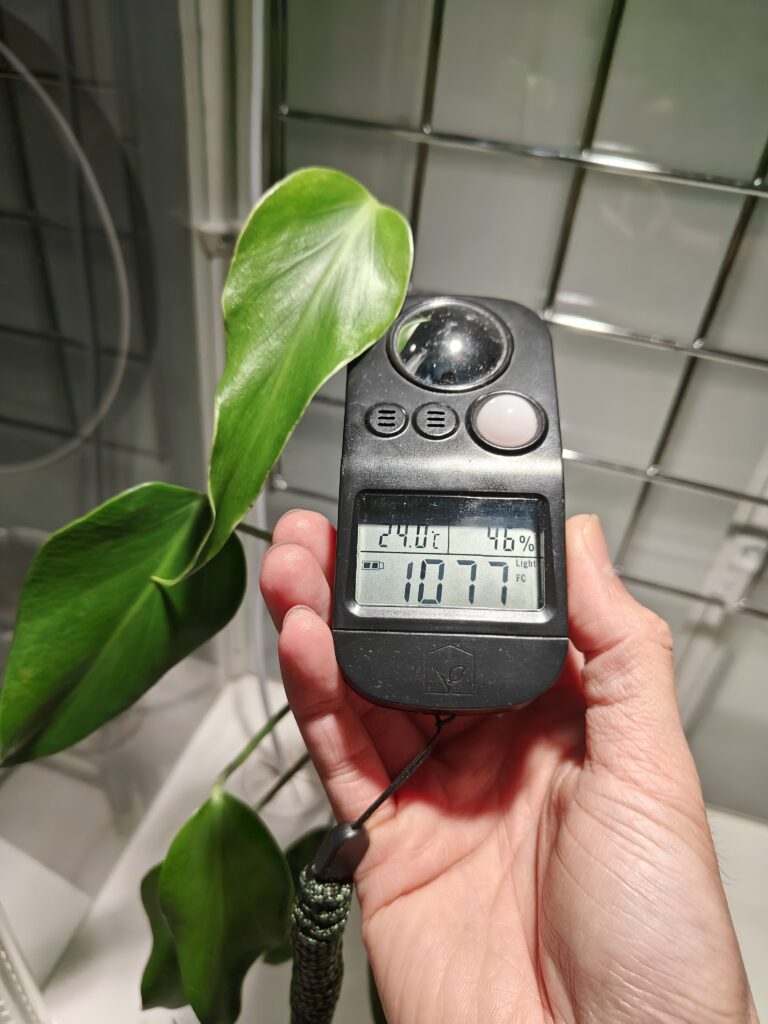
When I set the plant at the bottom of the cabinet, the reading at the top leaf is about 1000 FC, which is only a third of the direct sun reading at my window – but remember the sun only shines on the plant for about 2 hours a day (and only on clear days), whereas the grow light will be at 1000 FC for as long as I want to keep it on – let’s say 12 hours a day. By a very rough comparison, 3000 FC x 2 hours is less light received than 1000 FC x 12 hours.
Getting more accurate, let’s calculate the Daily Light Integral (DLI) that my plant is getting in this setup:
- PPFD is about 180 µmol/s/m² (which is 1000 FC x 0.18 for white LED)
- Converting this to an hourly rate: 180 x 60 x 60 = 648,000 µmol/h
- Converting µmol to mol: 648,000 / 1,000,000 = 0.648 mol/h
- Multiplying by 12 hours a day: 0.648 x 12 = 7.776 mol/day
So my Monstera Burle-Marx Flame is getting about 7.8 mol/day under the Apsect Gen2 grow light in this setup. Calculating the DLI is not always necessary – simply stating that the plant gets 1000 FC x 12 hours a day from a white LED light would suffice (strength, duration, context).
Q: Where can I find the light strength requirements for other plants?
A: I’ve compiled a helpful table with many common houseplants here.
Check out the Apsect Gen2 and get 15% off with my code: DARRYLASP2
(House Plant Journal is an affiliate partner with Soltech)
If you’re looking for a logical and sensible approach to houseplant care, I’ve created the perfect online course for you:

